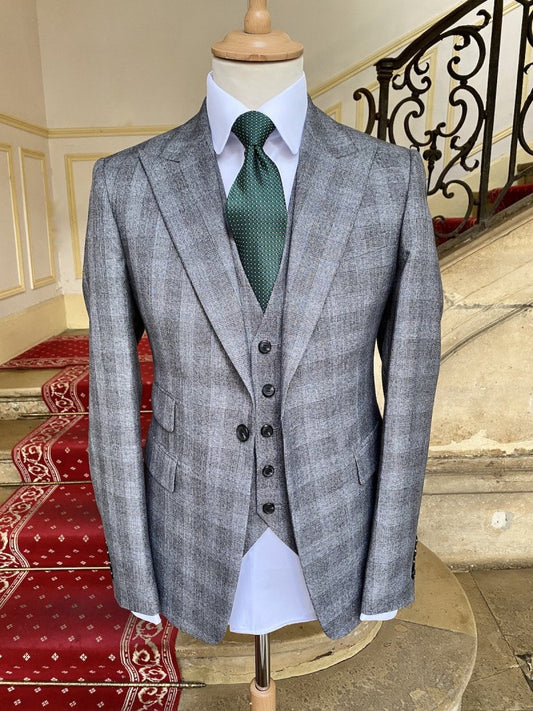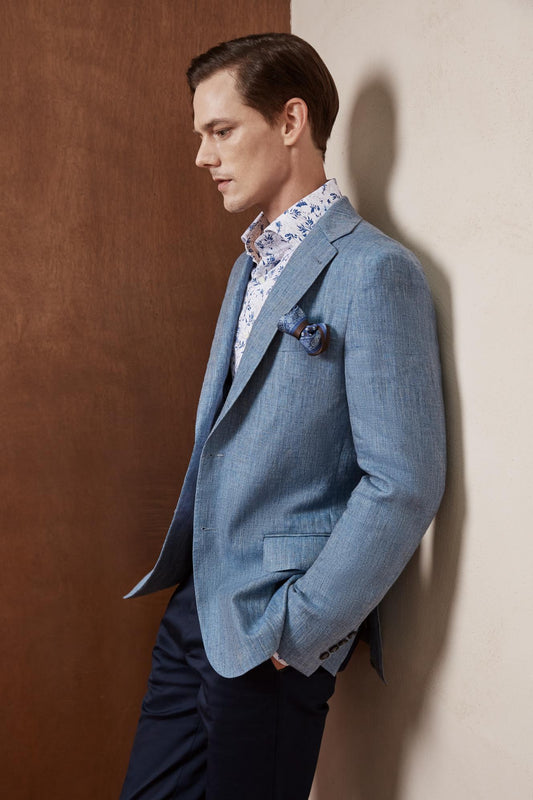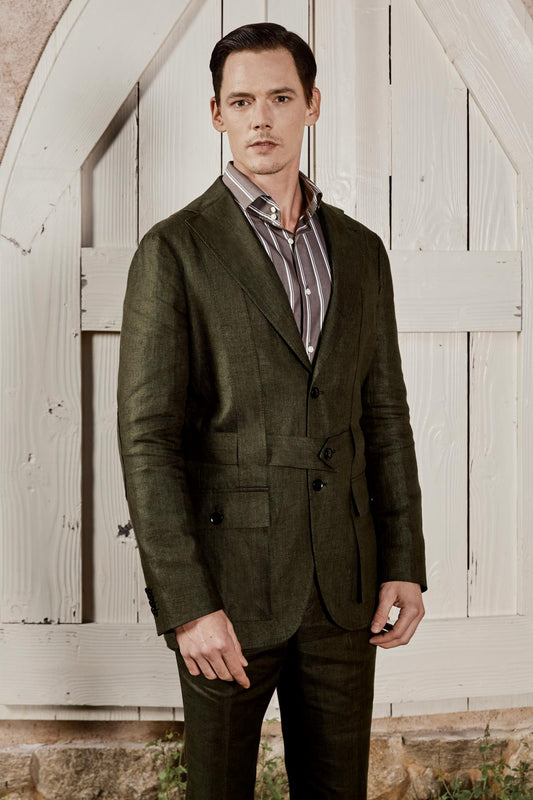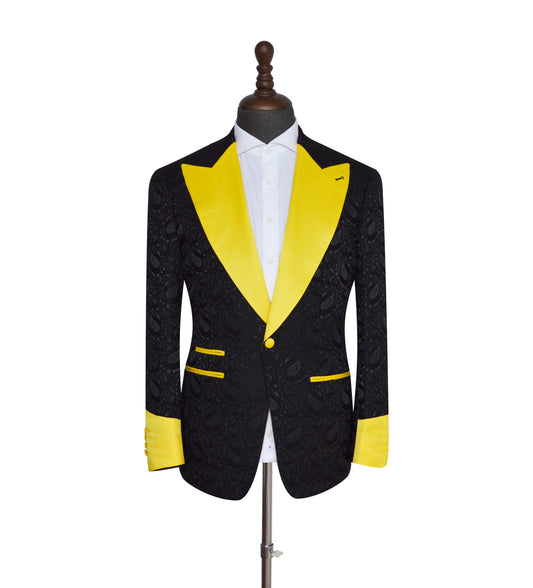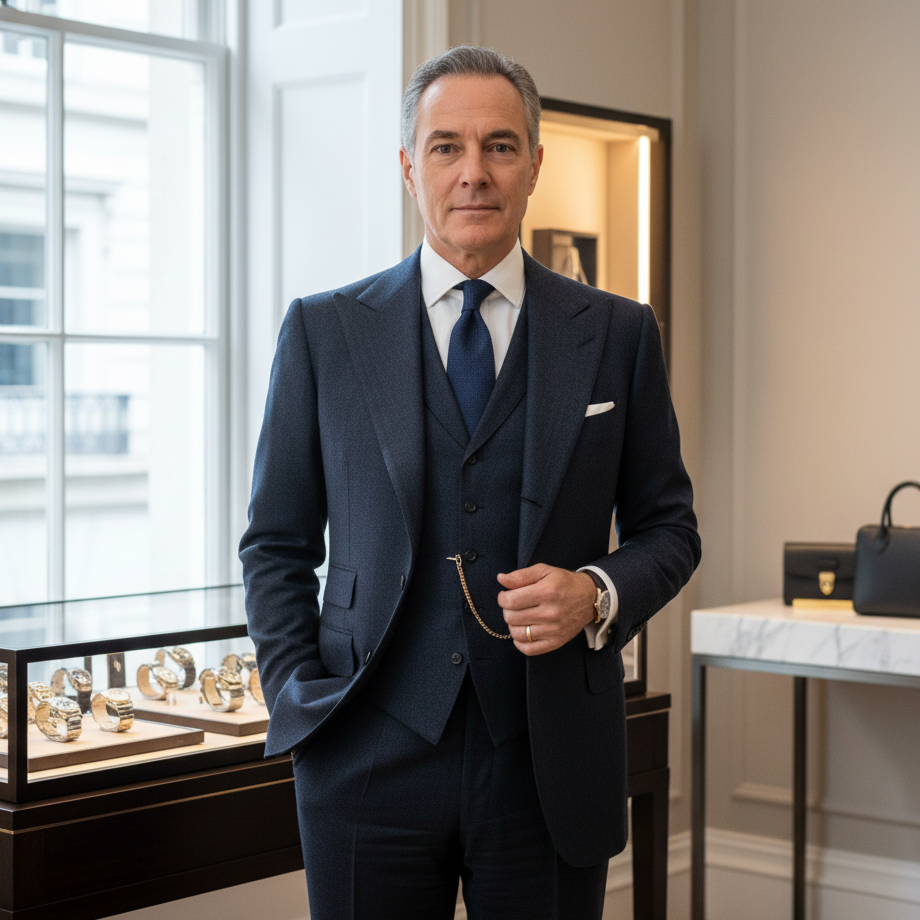Two entrepreneurs launch competing luxury watch brands targeting high-net-worth customers. Both possess strong design sensibility and industry knowledge. Similar positioning emphasising craftsmanship, heritage-inspired aesthetics, and exceptional quality. Comparable pricing at £8,000 to £25,000 per timepiece. Both invest substantially in brand development, marketing campaigns, and retail presence.
Eighteen months later: Brand A achieves £4.5 million annual revenue with waiting lists for signature models. Customer testimonials emphasise brand authenticity and craftsmanship credibility. Retail partners enthusiastically support brand expansion. Industry media coverage positions founder as serious luxury entrepreneur understanding heritage and quality. Brand equity compounds through consistent excellence and market confidence.
Brand B struggles reaching £800,000 revenue despite equivalent product quality and comparable marketing investment. Customer feedback questions brand authenticity and luxury credibility. Retail partnerships remain cautious about inventory commitments. Industry observers note disconnect between luxury brand positioning and founder presentation standards. Brand perception suffers from credibility gaps preventing premium market acceptance.
The difference becomes immediately apparent at first industry trade show. Brand A founder presents in impeccable Savile Row bespoke three-piece suit: perfect shoulder construction, hand-stitched lapels, subtle Prince of Wales check in finest English cloth. Every detail communicates the craftsmanship, attention to precision, and quality commitment the watch brand promises. The personal presentation embodies brand values before any product discussion begins.
Brand B founder wears expensive but casual business attire: designer labels but relaxed styling disconnected from luxury brand positioning. The cognitive dissonance strikes customers and industry professionals immediately: how can someone credibly sell £15,000 watches promising exceptional craftsmanship whilst personally presenting in casual attire suggesting different values and standards?
Luxury customers explain purchasing decisions candidly: "We buy luxury brands from people who live luxury values. The founder's presentation tells us whether craftsmanship commitment is authentic or just marketing. When brand owners personally embody quality and excellence through every detail including their own presentation, we trust the brand promise completely."
The Problem: Luxury Brand Promises Without Personal Embodiment
Luxury brand owners achieve remarkable success building products and services promising exceptional quality, craftsmanship excellence, and sophisticated aesthetics. Years developing brand positioning and marketing strategies. Creating products delivering genuine quality and performance. Building distribution networks and retail partnerships. Investing substantially in brand development and customer experience. The brand building capability is real and commitment genuine.
Then luxury market success requires personal embodiment of brand values that business capability alone doesn't ensure. Do customers believe this owner genuinely understands and lives luxury standards? Will personal presentation inspire confidence in brand authenticity and quality commitment? Does owner embodiment match luxury promises and premium positioning? Can brand credibility survive when owner presentation contradicts brand values?
Luxury customers evaluate brand authenticity through owner credibility and personal alignment with stated values. The founder presenting luxury craftsmanship brand whilst wearing mass-market fashion creates immediate authenticity questions. How can someone credibly promise bespoke quality without investing in bespoke presentation personally? The disconnect between luxury brand positioning and casual owner presentation raises fundamental doubts about genuine commitment to excellence versus opportunistic premium pricing.
Retail partners assess luxury brand potential partly through owner credibility and personal brand alignment. Premium retailers risk reputation and floor space on new luxury brands. Owner presentation signals whether brand understanding and quality commitment justify retail partnership confidence. The luxury brand founder arriving at partnership meetings in off-the-rack suits, however expensive, communicates different standards than the bespoke craftsmanship the brand promises customers. Retail buyers notice discrepancies immediately and evaluate brand credibility accordingly.
Industry media covering luxury markets scrutinises brand authenticity intensely. Journalists and influencers assess whether luxury positioning reflects genuine commitment or marketing opportunism. Personal presentation provides immediate credibility signal. Luxury brand founders in impeccable bespoke tailoring demonstrate authentic understanding of craftsmanship, quality investment, and excellence commitment. Those in adequate but unremarkable attire suggest luxury positioning without genuine luxury values embodiment.
Customer confidence in luxury purchases depends critically on brand authenticity perceptions. Premium pricing requires trust that quality promises reflect genuine commitment rather than marketing manipulation. Customers observe owner presentation as authenticity indicator: does this person personally live the values they sell? The luxury brand owner in bespoke Savile Row suit embodies craftsmanship appreciation and quality investment authentically. The owner in casual attire creates cognitive dissonance undermining brand credibility and purchase confidence.
The challenge is not brand building capability or product quality, both may be exceptional. It is recognising that luxury market success requires personal embodiment of brand values beginning fundamentally with presentation matching luxury promises, and understanding that bespoke tailoring investment is brand imperative rather than personal preference when selling luxury products demanding customer confidence in authenticity and craftsmanship commitment.
The Status Quo: Brand Management Without Personal Alignment
Most luxury brand owners approach business building through product focus and marketing excellence. Design development. Quality control. Brand positioning. Marketing campaigns. Distribution building. Within brand management and product development contexts, business focus succeeds delivering quality offerings and professional marketing.
This works adequately for brand launch and initial market entry. Product quality demonstrates capability. Marketing creates awareness and positioning. Distribution enables customer access. Initial customers appreciate product excellence and brand promise. Within early-stage contexts, product focus and marketing investment deliver results establishing market presence.
Problems emerge when luxury market penetration requires authenticity credibility and premium positioning sustainability beyond product quality alone. Why do certain luxury brands achieve rapid customer acceptance and waiting list demand whilst comparable quality competitors struggle gaining traction? Why do retail partners enthusiastically support specific luxury brands whilst remaining cautious about others with equivalent products? Why does luxury market success seem disconnected from product quality and marketing investment levels?
The luxury market landscape reveals clear patterns. Successful luxury brand owners invariably embody brand values through personal presentation matching luxury promises. Their appearance at industry events, retail partnerships, customer interactions all demonstrate authentic commitment to quality and excellence. Bespoke tailoring communicating craftsmanship appreciation and quality investment personally. Perfect fit signalling attention to precision matching brand promises. Exceptional fabric quality demonstrating standards commitment extending from personal presentation to product development.
Retail partners explain luxury brand evaluation frameworks candidly. "Product quality matters supremely but owner credibility determines partnership confidence. We assess whether founders personally live luxury values they market. Presentation signals authenticity and commitment depth. Luxury brand owners in bespoke Savile Row tailoring demonstrate genuine understanding of craftsmanship, quality investment, and excellence pursuit. Those in adequate business attire suggest luxury positioning without authentic values embodiment regardless of product quality."
Luxury customers articulate purchasing psychology clearly when pressed. "Premium pricing demands confidence in brand authenticity and quality commitment. We observe brand owners as credibility indicators. Personal presentation tells whether luxury promises reflect genuine values or marketing opportunism. The founder wearing bespoke suits embodies craftsmanship appreciation authentically. We trust brands when owners personally demonstrate values they sell."
Industry media covering luxury sectors emphasise authenticity importance repeatedly. "Luxury markets punish inauthenticity severely. Customers pay premiums expecting genuine excellence commitment. Brand owners must embody values personally. Presentation provides immediate authenticity assessment. Those maintaining luxury positioning without personal luxury values embodiment struggle achieving lasting success regardless of initial product quality or marketing sophistication."
Meanwhile, luxury brand owners strategically aligning personal presentation with brand values achieve superior market success. Customer confidence develops naturally when authenticity is evident through owner embodiment. Retail partnerships proceed enthusiastically when presentation demonstrates genuine luxury understanding. Industry media coverage positions brands favourably when owner credibility supports luxury claims authentically. Brand equity compounds through consistent value alignment visible through every owner interaction and presentation detail.
The Implications: Brand Equity Damaged Through Presentation Disconnect
The business consequences affect brand credibility, customer confidence, retail support, and long-term luxury positioning sustainability substantially. Luxury brand equity depends critically on authenticity perceptions and quality commitment credibility. Personal presentation disconnect undermines brand value systematically through customer confidence erosion and market credibility damage impossible to overcome through product quality or marketing investment alone.
Customer acquisition costs multiply when authenticity questions undermine purchase confidence. Luxury customers research extensively before premium purchases. Owner presentation analysis forms credibility assessment fundamentally. The disconnect between luxury brand promises and casual owner presentation creates purchase hesitation requiring additional marketing expense and extended consideration periods. Customer lifetime value suffers through reduced purchase frequency and limited referral activity stemming from incomplete brand confidence.
Retail partnership quality degrades when presentation gaps raise authenticity concerns. Premium retailers allocate floor space and inventory investment to brands demonstrating lasting luxury credibility. Owner presentation signals commitment depth and values authenticity. Retail partners remain cautious about luxury brands when founders fail embodying stated values personally. Partnership terms reflect confidence limitations through reduced inventory commitments, unfavourable consignment arrangements, and conditional support requiring continuous proof rather than enthusiastic partnership.
Brand positioning sustainability becomes compromised when personal embodiment fails matching luxury promises. Initial product quality may attract customers but lasting luxury success requires consistent authenticity demonstration. Presentation disconnect creates cumulative credibility damage as customer base expands and market scrutiny intensifies. Luxury positioning that should appreciate through brand building instead plateaus or declines as authenticity questions prevent premium market acceptance and customer confidence development.
Competitive differentiation weakens when presentation undermines luxury credibility. Luxury markets reward authentic excellence and punish perceived inauthenticity severely. Brands with owner presentation matching luxury promises command premium positioning and customer loyalty impossible to achieve through product quality alone. The presentation gap places brands at permanent competitive disadvantage regardless of product excellence or marketing sophistication because luxury customers trust authenticity over quality claims when disconnect suggests opportunistic positioning rather than genuine values commitment.
The Considerations: Brand Values Requiring Personal Embodiment
Consider the London-based leather goods entrepreneur launching luxury handbag brand. Design credentials were exceptional: fashion design education, apprenticeship with established luxury house, deep understanding of leather quality and construction techniques. Product development delivered genuine excellence: hand-stitched construction, premium Italian leather, exceptional finishing quality justifying £2,500 to £8,000 pricing positioning alongside established luxury brands.
Initial retail approaches revealed presentation challenges immediately. Product quality impressed buyers but owner credibility questions emerged subtly. Entrepreneur presented in contemporary casual fashion: designer labels but relaxed styling disconnected from luxury brand positioning emphasising heritage craftsmanship and bespoke quality. Retail buyers noticed disconnect between brand promises of exceptional craftsmanship and owner presentation suggesting different values and priorities.
The constraint was not product quality or design capability. The handbag excellence justified luxury positioning completely. But luxury retail evaluation frameworks assessed brand credibility through owner embodiment alongside product quality. Would customers believe craftsmanship commitment from entrepreneur failing to invest in personal presentation quality? Did casual attire suggest authentic luxury values or opportunistic premium pricing disconnected from genuine excellence appreciation?
The solution was not abandoning contemporary aesthetics or pretending traditional luxury background. The design innovation and fresh perspective remained competitive advantages and brand differentiation. But strategic presentation investment demonstrated authentic luxury values embodiment. Commissioning first bespoke suits: three-piece suits with hand-stitched construction matching handbag production techniques, exceptional English cloth demonstrating quality investment appreciation, perfect fit signalling precision attention matching brand promises.
The transformation proved immediate and substantial. Retail partnership discussions generated entirely different responses. Same products, same brand positioning, same entrepreneur, but presentation communicating authentic luxury values embodiment and craftsmanship commitment credibility. The bespoke suits demonstrated personally living excellence standards promised to customers. Hand-stitched lapels paralleled handbag construction techniques. Quality fabric investment showed standards commitment extending from personal presentation to product development.
Retail partnerships developed rapidly with enhanced brand credibility. Premium department stores welcomed brand enthusiastically. Luxury boutiques committed inventory confidently. Customer response validated authenticity through strong sales and referral activity. Industry media positioned brand favourably citing founder credibility and authentic luxury values embodiment. The presentation investment beginning with proper tailoring enabled everything else, transforming design excellence into luxury brand credibility commanding retail support and customer confidence product quality alone couldn't achieve.
Or the Manchester-based furniture designer launching bespoke furniture brand targeting high-net-worth residential and commercial clients. Craftsmanship capability was proven: traditional joinery training, years working with premium materials, exceptional finishing standards. Product pricing reflected genuine quality: £15,000 to £80,000 per custom commission requiring months of hand craftsmanship and material investment.
Client acquisition proved challenging despite product excellence and portfolio quality. Potential customers appreciated craftsmanship but questioned brand positioning and value justification. The disconnect emerged through designer presentation: skilled craftsman aesthetic in workshop attire rather than luxury brand owner embodying bespoke quality values. Clients investing £50,000 in furniture expected luxury brand experience including designer presentation matching craftsmanship promises and investment scale.
Strategic presentation evolution addressed credibility gaps directly. Investment in bespoke tailoring for client consultations: perfectly fitted suits enabling confidence during extended design discussions, quality communicating standards matching furniture craftsmanship, presentation demonstrating luxury values embodiment authentically. Workshop attire maintained appropriately for production contexts but client-facing presentation elevated to match luxury brand positioning and commission values.
Client relationships transformed with presentation alignment. High-net-worth customers responded to designer whose personal presentation matched furniture quality promises. Commission values increased as confidence in craftsmanship commitment strengthened through authentic luxury embodiment. Referral activity accelerated through customer satisfaction including professional presentation experience. Brand positioning elevated from skilled craftsman to luxury furniture designer commanding premium pricing and sophisticated clientele product quality deserved but presentation previously prevented accessing.
The Value and Return: Brand Equity Through Personal Embodiment
When personal presentation embodies brand values through strategic investment, luxury market success proceeds naturally through authentic credibility and customer confidence. Retail partners embrace brands when owner presentation demonstrates genuine luxury understanding and values commitment. Customers purchase confidently when personal embodiment validates quality promises authentically. Industry media positions brands favourably when founder credibility supports luxury claims through consistent value demonstration.
The financial returns prove transformational for brand building and business sustainability. Luxury positioning success generating premium pricing power and margin sustainability impossible through product quality alone. Customer acquisition efficiency improving through authenticity-driven confidence and reduced marketing requirements overcoming credibility barriers. Customer lifetime value multiplying through loyalty stemming from brand trust and referral activity flowing from authentic satisfaction.
Brand equity appreciation accelerates when personal embodiment validates luxury positioning consistently. Market credibility compounds through owner presentation reinforcing brand promises continuously. Competitive differentiation strengthens as authenticity becomes sustainable advantage competitors cannot replicate without genuine commitment. Exit value potential maximises when luxury brand credibility rests on authentic foundations rather than marketing alone.
Retail partnership quality transforms when presentation alignment demonstrates commitment depth and values authenticity. Premium retailers allocate superior floor space and inventory investment to brands with owner credibility supporting luxury positioning. Partnership terms improve reflecting confidence in brand sustainability and market acceptance. Retail expansion proceeds smoothly when presentation credibility opens doors product quality validates subsequently.
Perhaps most valuable: recognition that personal presentation is brand imperative rather than optional consideration in luxury markets. The bespoke three-piece suit embodying craftsmanship appreciation and quality investment. The perfect tailoring demonstrating precision attention matching brand promises. The exceptional fabric quality signalling standards commitment extending from personal presentation to product development. The authentic luxury values embodiment apparent through every customer interaction, retail partnership, and industry engagement.
And understanding this imperative means investing in bespoke tailoring not as personal indulgence but as brand necessity. When selling luxury products promising exceptional craftsmanship, the owner must personally demonstrate craftsmanship appreciation through bespoke suit investment. When marketing quality commitment, personal presentation must embody quality standards visibly. When positioning premium brands, owner embodiment must validate luxury values authentically through every presentation detail beginning fundamentally with tailoring matching brand promises.
The Cost of Inaction: Brand Promises Without Personal Credibility
The alternative damages brand equity systematically despite product quality and marketing investment. Customer confidence stays conditional when presentation disconnect raises authenticity questions. Retail partnerships remain cautious when owner embodiment fails matching luxury positioning. Industry credibility suffers when personal presentation contradicts brand values. Market penetration plateaus as credibility barriers prevent premium positioning acceptance regardless of product excellence or marketing sophistication.
Revenue growth limits substantially below potential when presentation gaps undermine brand credibility. Customer acquisition requiring excessive marketing investment overcoming authenticity concerns rather than proceeding naturally through confident purchase decisions. Average transaction values constraining as confidence limitations prevent premium pricing acceptance. Customer lifetime value reducing through limited repeat purchase and minimal referral activity stemming from incomplete brand trust.
Brand equity appreciation plateaus or declines when personal embodiment fails validating luxury positioning. Market credibility erodes as customer base expands and scrutiny intensifies. Competitive positioning weakens as authentic competitors establish permanent advantages through credible value embodiment. Exit value potential reduces dramatically as brand equity rests on marketing alone rather than authentic foundation supporting sustainable premium positioning.
Retail partnership quality remains limited when presentation raises authenticity concerns. Premium retailers allocate minimal resources to brands questioning commitment depth. Inventory investment stays conservative reflecting confidence limitations. Floor space allocation remains marginal rather than premium. Partnership terms reflect uncertainty through unfavourable consignment arrangements and conditional support rather than enthusiastic partnership and expansion investment.
Most painfully visible at every luxury industry event and retail partnership: successful luxury brand owners invariably presenting in impeccable bespoke tailoring embodying brand values authentically whilst struggling competitors in adequate business attire damage credibility through presentation disconnect regardless of equivalent or superior product quality. The visual reminder that luxury markets demand authentic value embodiment, and personal presentation beginning with bespoke tailoring investment is brand imperative rather than optional consideration when selling premium products requiring customer confidence in genuine excellence commitment.
The retail meetings, the customer consultations, the industry conferences: luxury brand success correlates directly with owner presentation matching brand promises. The bespoke Savile Row suit demonstrates craftsmanship appreciation authentically. The perfect fit signals precision attention matching quality claims. The exceptional fabric investment shows standards commitment extending from personal presentation to product development. These elements establish brand credibility enabling product quality to generate appropriate market success and customer confidence presentation gaps prevent achieving regardless of excellence delivery.
Moving Forward: Brand Embodiment Through Presentation Investment
Luxury brand ownership demands personal values embodiment through presentation matching brand promises. Not superficial styling over substance. Not abandoning authentic identity or pretending different backgrounds. But recognising that luxury positioning requires credible value demonstration beginning fundamentally with personal presentation, and understanding that bespoke tailoring investment is brand necessity rather than personal preference when selling products promising exceptional quality and craftsmanship excellence.
The precision of bespoke tailoring embodies craftsmanship appreciation brands promise customers. Perfect fit demonstrates attention to detail matching quality commitments. Exceptional fabric quality signals investment in excellence extending from personal presentation to product development. Hand-finished construction parallels manufacturing promises and technical commitment. These elements establish authentic luxury values embodiment enabling brand credibility and customer confidence product quality alone cannot generate without personal demonstration.
Brand contexts demand brand-appropriate presentation consistently. Bespoke suits for customer consultations, retail partnerships, industry events, media engagements. Production environments allow appropriate working attire when customer-facing presentation maintains luxury standards consistently. The presentation discipline demonstrates values commitment and professionalism matching premium positioning requirements and customer expectations for luxury brand experience.
Schedule a consultation to discuss how bespoke tailoring enables your luxury brand credibility through authentic values embodiment. From retail partnership development to customer confidence building, brand positioning sustainability to competitive differentiation, we understand luxury brand ownership challenges and the presentation standards premium market success demands.
Your brand promises exceptional quality. Your personal presentation must embody those values authentically. It begins with understanding that luxury customers buy from owners who live luxury standards, and that bespoke tailoring investment is brand imperative demonstrating craftsmanship appreciation, quality commitment, and excellence pursuit your luxury positioning requires for credibility, customer confidence, and lasting premium market success.


